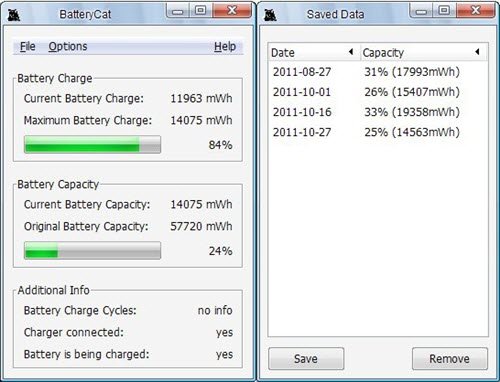

A full charge cycle is measured by 100% battery drain. The cycle count number in the “Installed Batteries” section shows you how many charge cycles a battery has been through. RELATED: Debunking Battery Life Myths for Mobile Phones, Tablets, and Laptops That number will decrease over time as the battery chemistry changes.

Note: If you have a new device, it may actually have a higher current full charge capacity than its design capacity. This number will continue going down over time as you use your battery and put it through more charge cycles. For reference, the laptop we used was about five years old. The battery was originally designed to hold 42,002 mWh, but now has a maximum of 40,226, meaning it holds a little less charge than it used to. This is a result of the normal wear a battery experiences over time, and it lets you see just how worn down your battery is. Press Windows+X or right-click the Start button (represented by the Windows icon) and choose “PowerShell” from the Power User menu.Īt the PowerShell prompt, type the following command, and then press Enter: powercfg /batteryreportįor example, in the screenshot above, you can see that the design capacity of the battery is 44,400 mWh, while the current full charge capacity is 37,685 mWh. You just have to run a single command to create it.įirst, open a PowerShell window. The actual battery report you’ll be generating is an easy-to-understand web page file. RELATED: Use PowerCfg in Windows 7 to Evaluate Power Efficiency Generate a Battery Report You can also use powercfg to generate an energy report, which gives you recommendations for ways you can reduce your computer’s energy usage and extend its battery life. We’ll be using PowerShell in this tutorial, but either works just fine. This battery reporting feature is built into the powercfg command, so you’ll have to pop into Windows Terminal, Command Prompt, or PowerShell to run the command. Generate a report to see health information about your laptop’s battery, how its capacity has decreased over time, and other interesting statistics. Windows 10, 11, and previous versions all include a hidden “Battery Report” feature.


 0 kommentar(er)
0 kommentar(er)
